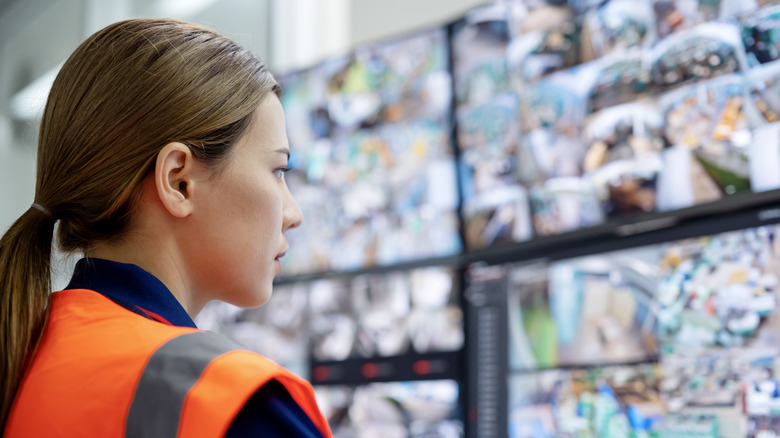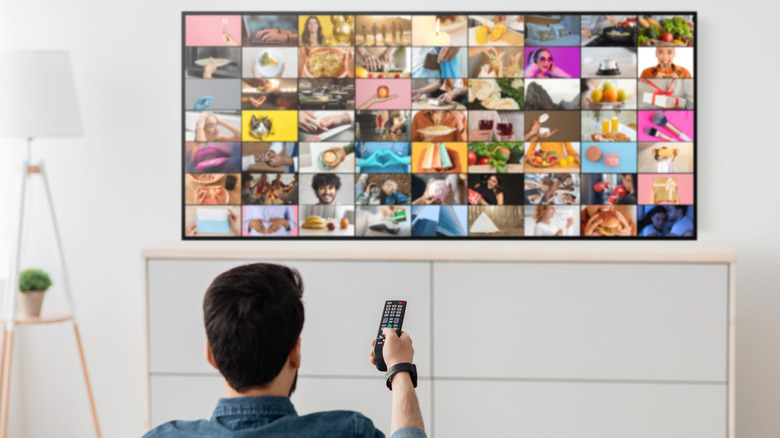Why Are Modern TVs Cheaper Than Most PC Monitors?
If you've ever spent much time in your local electronics store, then you may have noticed a certain inequality in the pricing patterns between televisions and computer monitors. TVs are, generally speaking, significantly more affordable than comparably sized monitors. In fact, there are several 55-inch, 4K televisions on the market today that you can get for significantly less money than a 1440p, 27-inch monitor. This might lead some to question the reasoning behind this discrepancy. Is the technology between these different kinds of display really so fundamentally different that it can explain such a large disparity in their value?
Well, yes and no. There are a number of different factors that go into the pricing of any electronics. Economic principles like supply and demand certainly play a role in why computer monitors are so much more expensive. According to Alibaba, the global market for TVs is between two to four times larger than that of monitors (depending on sources). Computer monitors being in a smaller and more specialized market likely means that it's a less competitive one, and less competition usually means higher prices for any product. But economic factors aside, monitors also have different performance priorities than TVs. This means that there are a few key differences that can be commonly found in the physical hardware that may also contribute to the higher cost.
Differences in picture
It might seem to the casual observer that TVs and computer monitors are more or less the same type of device, especially now that HDMI has become the standard form of high-definition media connectivity for both types of display. There are even a handful of TVs out there that might make for a decent computer monitor if you wanted to go that route, but several key differences in the overall design philosophy of computer monitors make them better for up-close viewing. The first are the differences in brightness and color.
TVs are generally designed to be big, bright, and colorful. These traits are ideal when you're viewing an image from far away. Monitors, on the other hand, are more focused on pixel density and color accuracy. You'll often see the metric PPI (pixels per inch) used in reference to monitors. This is because the number of pixels in a square inch of the displace is more important to the way the human eye perceives sharpness and clarity when viewing a screen up close than the number of pixels overall. So, a smaller screen with fewer pixels may actually be able to produce a sharper image than a larger screen with more.
Color accuracy is another important factor that plays into monitors more than TVs. Bright and vibrant colors might be sufficient for entertainment purposes, but creative endeavors like graphic design, photo editing, and video editing all require the user to be able to view an accurate portrayal of the colors on the screen.
Differences in input speed and refresh rates
The other primary difference between the performance of TVs and computer monitors has to do with the speed with which the images on screen are displayed. The term "refresh rate" refers to the number of times per second that the display is able to update the image on screen from an input source. This is measured in Hertz (Hz).
Having a high refresh rate isn't generally seen as being as important on TVs as it is on a computer monitor, especially when it comes to gaming. Most modern TVs tend to offer around a 30-60 Hz refresh rate, with some of the more gaming and sports-focused models offering something closer to 120 Hz. Compare this to the best gaming monitors and you'll start to see numbers like 144Hz, 165Hz, and even 240Hz. Part of this is due to the number of frames that the GPUs used in computers can produce. Not many of the electronics you typically plug into a TV are able to produce more than 120 frames per second, but high-end gaming computers can. This higher input speed can only be taken advantage of by a monitor that has a refresh rate to match. The downside to this is that higher refresh rate displays also tend to be more expensive. These monitors often feature lower response times as well, which marks the amount of time it takes for individual pixels to change color.
Additionally, many computer monitors have tech that allows them to minimize input lag from peripherals (like a mouse and keyboard) as well as adaptive synchronicity tech like G-Sync and FreeSync. All of these features can provide unique benefits to computer monitors, but they can also affect the price.


